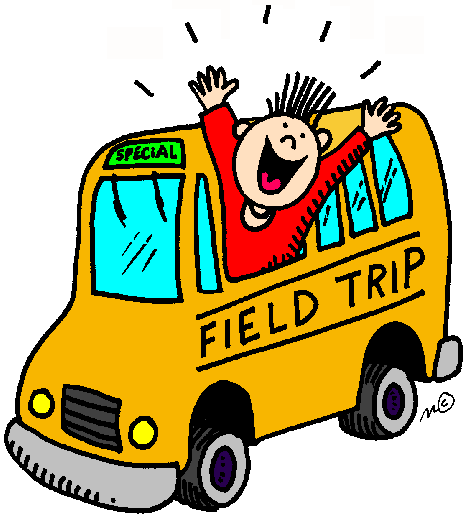Field trips can be daunting, but if you plan it right, they are well worth the effort.

Today, let's talk about museums. Why take preschoolers to museums? Besides observing and imitating proper social behavior for the situation, they will love looking at new (and old) things. Artistic colours and patterns, and interesting artifacts, will stimulate their mind and stir up their imagination.
Right, let's get planning:
First of all, choose a museum and visit it yourself. Does an area of it work with what you're learning about? Don't plan on taking the kids through the entire museum - everyone will end up tired and overwhelmed. It's better to show them a few things really well than to cram in heaps of things they won't remember the next day.
Try to speak with someone about a school trip (hopefully, the museum will have an education department - no problem if it's a children's or science museum!). If there's no education department, you'll have to do some extra prep, but the kids will have so much fun! Take notes on what you'd like to show, and also photographs (generally fine if you're not using a flash). Pick up a map of the museum to mark out your tour, and take note of restroom locations as well - you'll be going there for sure.
Next, enjoy the museum just for you - you're there, after all, so look at what you want to look at, and maybe have a coffee in the cafeteria, and browse the gift shop (there may be something useful for your class in there, but it's a good idea to skip this area when they're actually with you...).
Once you're home, design a work sheet. This can be as simple as a colouring page of one of the objects or inspired by a work of art, or a very easy kind of scavenger hunt (put what you'll be looking at on there in the order you'll see them). Pack up the crayons and pencils you'll need for the visit, too, if the museum doesn't supply them.
You'll also want to do some pre-visit lessons. These should include museum behaviour, looking at and talking about similar objects, increasing vocabulary and generally building enthusiasm for the trip. You may want to set up a mini-museum in your classroom or a space at your school to do this.
If the museum doesn't have a school program, you'll need to rope in some volunteers. Student teachers and parents are often willing and interested. Communicate with them so everyone knows the goals of the visit, rules and expected behaviour. If it's a larger group of students, divide and conquer, giving each leader a certain amount of kids, or a certain task (an important one to remember is the toilet monitor. This person should also have extra clothes for accident-prone kids).
Enjoy the visit - don't worry if the kids are a little crazy; they are learning how to behave, and you'll probably be pleasantly surprised with how they get on. Try to take some pictures of the students to use in your classroom.
Back at school, be sure to follow up with a lesson or two, and display their work and any pictures you took to commemorate the visit. Everyone will have so much fun remembering the special day away from school.
If the museum doesn't have a school program, you'll need to rope in some volunteers. Student teachers and parents are often willing and interested. Communicate with them so everyone knows the goals of the visit, rules and expected behaviour. If it's a larger group of students, divide and conquer, giving each leader a certain amount of kids, or a certain task (an important one to remember is the toilet monitor. This person should also have extra clothes for accident-prone kids).
Enjoy the visit - don't worry if the kids are a little crazy; they are learning how to behave, and you'll probably be pleasantly surprised with how they get on. Try to take some pictures of the students to use in your classroom.
Back at school, be sure to follow up with a lesson or two, and display their work and any pictures you took to commemorate the visit. Everyone will have so much fun remembering the special day away from school.
No comments:
Post a Comment